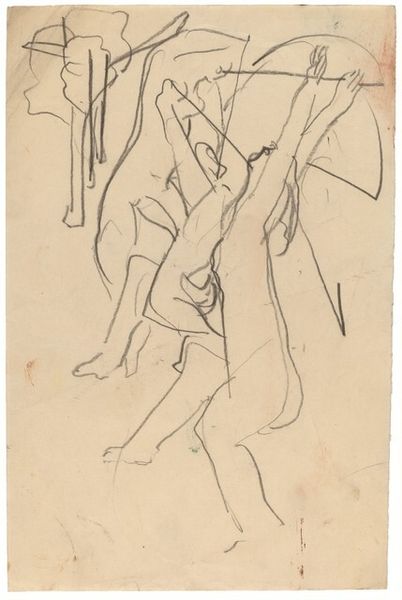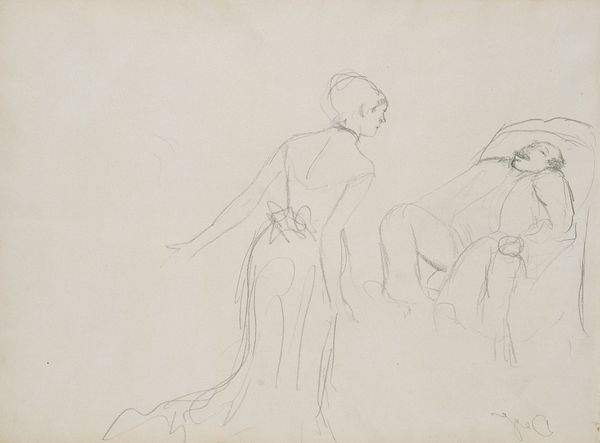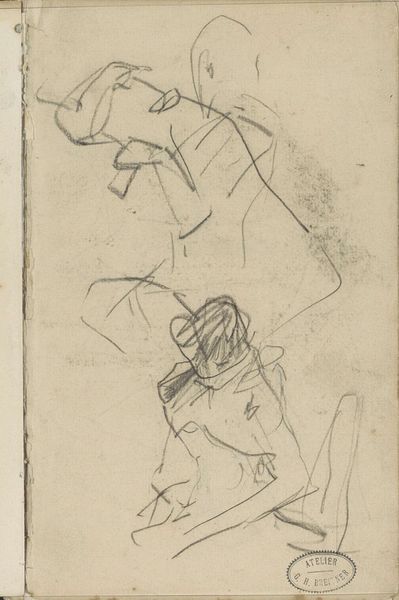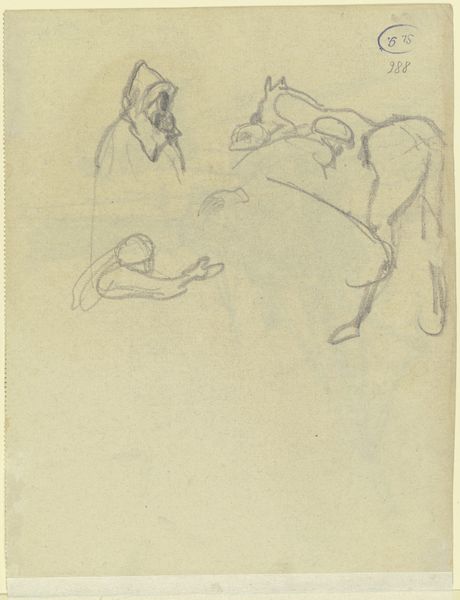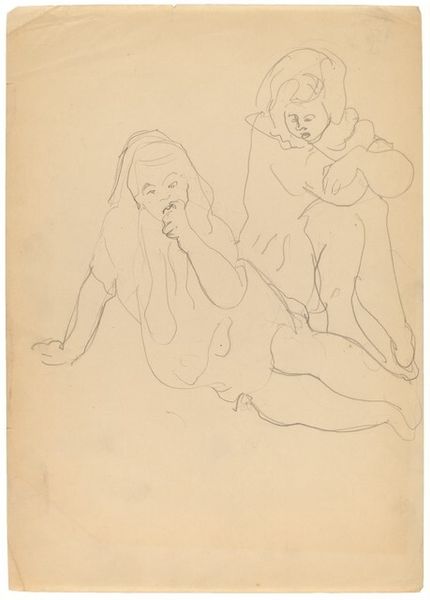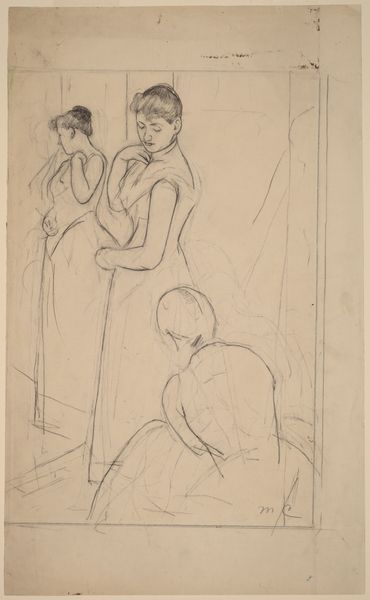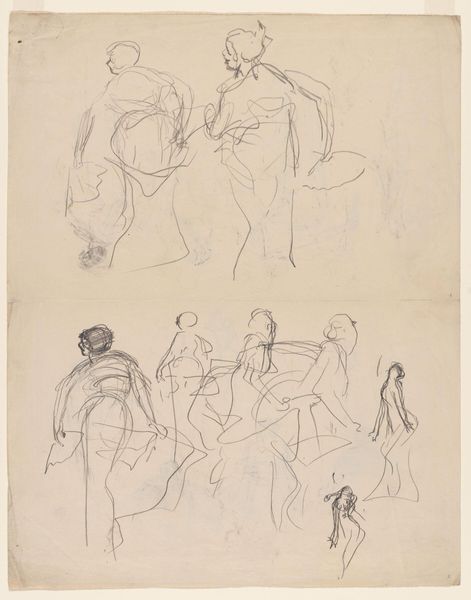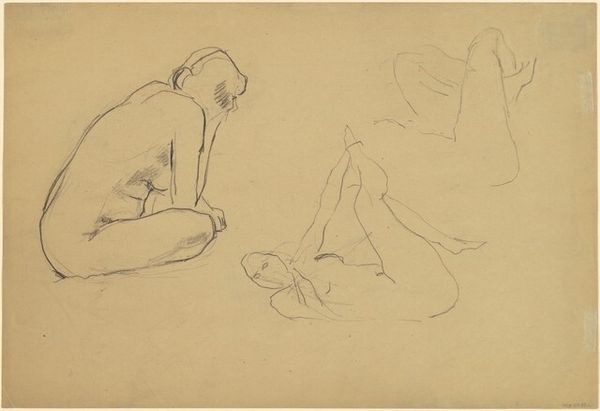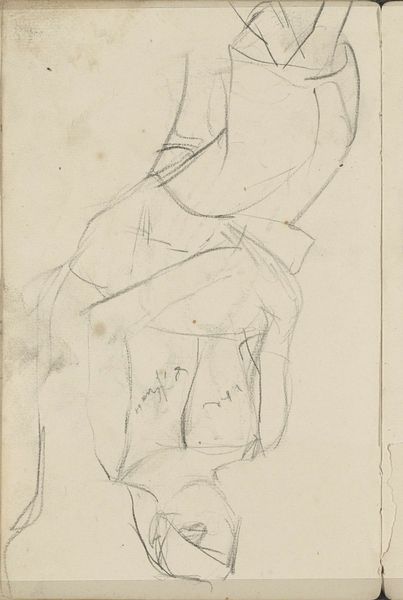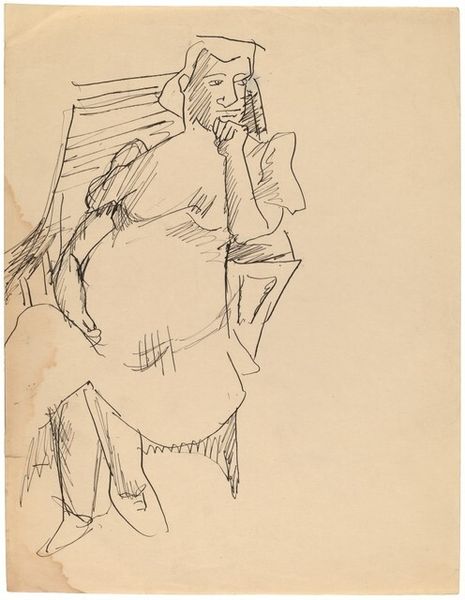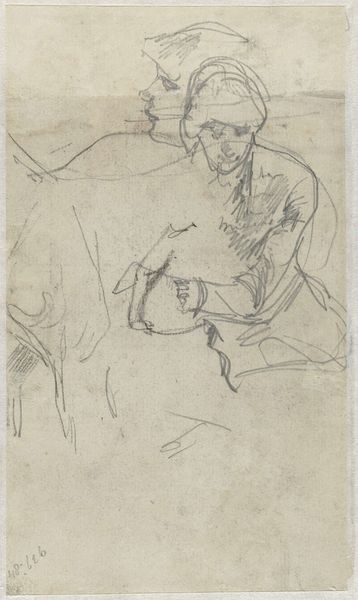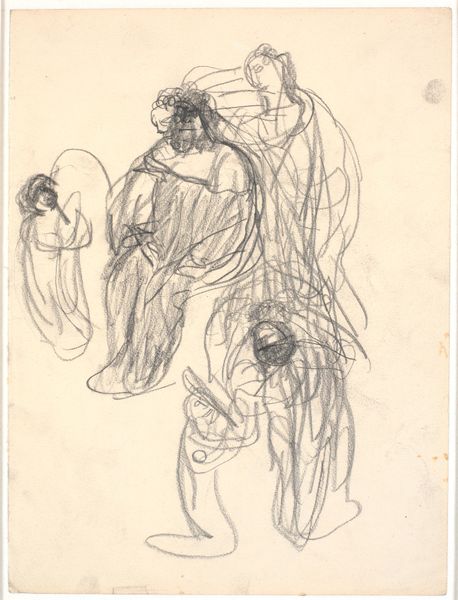
drawing, pencil
#
portrait
#
drawing
#
figuration
#
pencil
Copyright: National Gallery of Art: CC0 1.0
Curator: Mark Rothko's Studies of a Seated Figure Using a Hammer presents us with two separate pencil sketches of figures captured in apparent labour. Editor: The image is haunting, like looking at ghosts caught mid-action. The sketchy lines create a sense of impermanence. Are they building something, or demolishing? The ambiguity feels loaded, socially and politically. Curator: These images immediately convey physical effort, a universal element of our experience that speaks volumes. The figures themselves, caught with deft strokes, almost echo Cycladic figurines—simplified yet full of implied strength. Look at the symbolism of labour, power, creation. Rothko perhaps seeks to reveal elemental human processes? Editor: I read it as more loaded than elemental, perhaps reflective of the societal positioning of laborers in that time. The unseen conditions, the lack of specificity regarding gender, or background—that creates a haunting void. Rothko seems to ask, who is allowed to build, and at what cost? Are they victims of capital or its very engines? Curator: I can see that. Consider the hammer; throughout history, it has been a symbol not only of making but of revolution, of tearing down the old order. Its inclusion suggests an undercurrent of potential change, echoing earlier traditions depicting blacksmiths like Vulcan, a symbol of transformation through labor. The seated figures perhaps aren't just working but contemplating or embodying revolutionary energy. Editor: And I think situating this within Rothko's broader oeuvre is key. We understand his trajectory. It’s fascinating how he captured figuration at a certain time, then abandoned that for complete abstraction. Perhaps this piece sits right in that intersection—the figure becoming a shape of pure force or experience. Curator: The starkness really holds it together; these humble, spare strokes encapsulate powerful themes: manual work as burden, labor's symbolic potency, revolutionary potential, and enduring mystery. It truly encourages deeper thinking beyond the surface. Editor: Exactly. Looking at the act, the actor, and the history as well. A small image holds much and forces larger conversations, just like Rothko's more recognized later paintings.
Comments
No comments
Be the first to comment and join the conversation on the ultimate creative platform.
